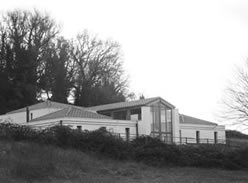A short distance from San Gemini and Terni stands the town of Roman origin of Carsulae, one of the most interesting archaeological sites of Umbria. To the south-east of the site is located the Visitor Center and Documentation “U. Ciotti” Carsulae find space within which the exhibition rooms, a bookshop.
On the ground floor classroom is dedicated to the routes of the natural andarchaeological Carsulae Arnolfe Lands, prepared by Cynthia Perissinotto and Hyginus Pineschi. The courses are aimed at the rediscovery of the environmental aspects of their Martani, fortifications located on the northern slopes of the Terni basin and pre-Roman settlements, with particular attention to the Umbrians and their places of worship. In addition there are four routes that span the two branches of the Flaminia, the Western and Eastern Europe. In the exhibition gallery, located upstairs, there are artefacts found during excavations that took place intensivelybetween 1951 and 1972.
Among these, noteworthy is a sarcophagus, dating from the first century. AD,originally located near the tomb spire, which collected the remains of a girl, andcontaining a necklace and a pair of gold earrings.
In the course of restoration, but exposed, is a statue of Bacchus, probably belonging to the building for the show, the late first century. A.D., beginning of next.
Of great impact are the remains of a colossal statue of the emperor Claudius,including the head and knee, dating to the earliest years of the reign, corroborating the hypothesis of a series of statues of the imperial family in the city court.
Completing the collection two memorial stones, a mosaic fragment found near the Forum and clay material of various kinds, used both as decoration of buildings, both for daily use. The lower floor is used for temporary exhibitions.


Comment (0)